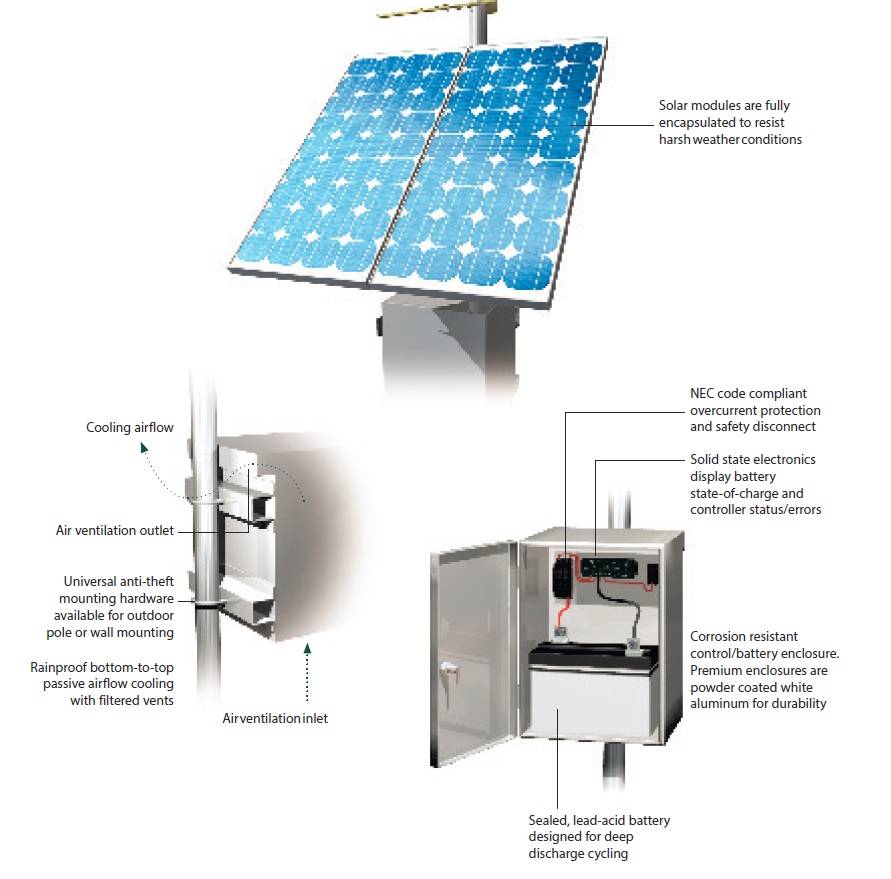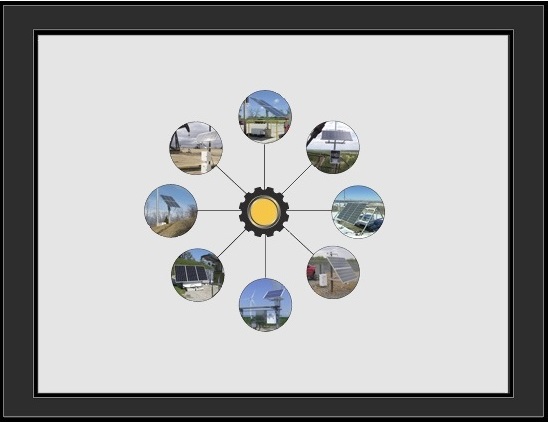
1562-2007 – IEEE Guide for Array and Battery Sizing in Stand-Alone Photovoltaic (PV) Systems
The IEEE standard 1562:2007 is a comprehensive overview on the sizing of array and batteries in stand-alone PhotoVoltaic (“PV”) systems. These off-grid solar systems are considered to have PV as their only incoming power source while using the batteries to store the energy produced by the solar panels.
Below are highlights of IEEE 1562. The complete standard can be purchased from IEEE at https://standards.ieee.org/findstds/standard/1562-2007.html
- IEEE 1562:2007 is the only industry standard for sizing a photovoltaic array and batteries in a system where the solar array is the only charging source.
- Peak sun-hours are to be used for the array power production calculations.
- Calculations should be based on the month with the lowest solar insolation and highest load demand.
- The calculations and system performance are only as accurate as the solar insolation & load data used.
- The sizing methodology does not take into account the use of Maximum Power Point Trackers (MPPTs). This means extra energy produced by the MPPT controller is considered a safety factor.
- As MPPT controllers are not considered in the calculations, the calculations should be done using nominal 12VDC PV modules (36 cells). Nominal 24VDC PV modules [72 cells] OK for 24VDC systems
- The calculations are based on amps and amp hours, as the solar array is sized to recharge the battery as the load consumes energy from the battery.
- Section 6 states the minimum battery autonomy should be 5-7 days for non-critical loads and areas for high solar insolation, and 7-14 days for critical loads or areas with low solar insolation.
- Typical losses used in the solar calculations are 10-20% (section 9.2).
- Section 9.4 states the minimum Array-to-Load Ratio (“ALR”) should be 1.1-1.2 for non-critical loads and areas for high solar insolation, and 1.3-1.4 for critical loads or areas with low solar insolation.
- A worksheet is included in the standard for manual calculations.
- A computer simulation is recommended for design verification (Section 10). SunWize has access to several design tools that we use to design and verify all of our solar systems.
Looking for the right system for your project? See our new Power Ready Express 12V & 24V Design Guide. Still don’t see what you need? Contact us at (866) 827-6527 for a quote, or submit your project information using our System Sizing Form !
SunWize designs our off-grid industrial solar power systems in accordance with the design parameters of IEEE 1562, as we’ve learned over decades of design experience that building a system correctly the first time will save our customers time, effort, and money by avoiding service calls and system failures that can be extremely costly and challenging, even for those who are best prepared to handle them.
Need even more design help? Head over to our Engineering Bulletin and our Past Webinar Sections.
We will guide you through the design and equipment selection for each project. Whether it’s a custom one-off design or choosing the right standard system part# for your project, we’ll take the time to make sure that the system is built and designed to your specific needs.
Whether you need a custom Power Ready System, or an off-the-shelf Power Ready Express Kit delivered immediately, rest assured we’re doing things right. Use the above guidelines to help navigate your own solar project, see how the competition measures up, or use them as re-assurance that our systems are built to withstand the harshest weather conditions and the most demanding industrial applications,



